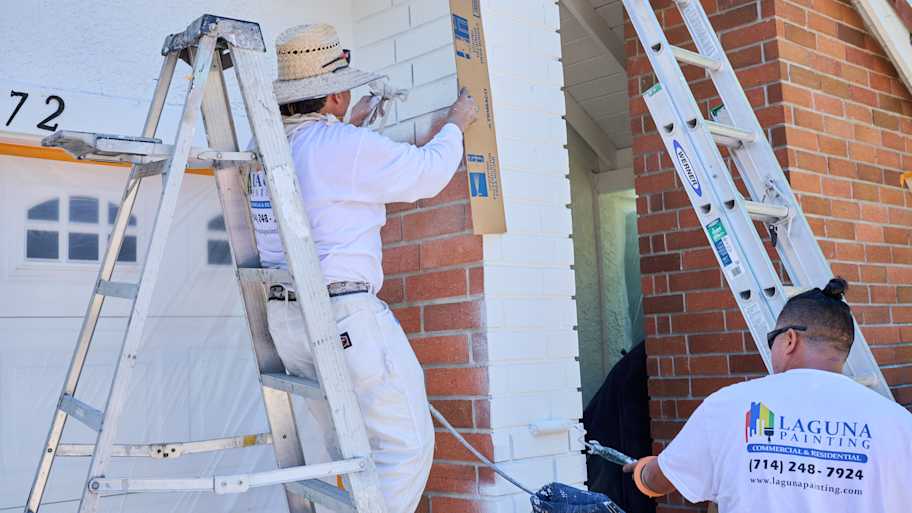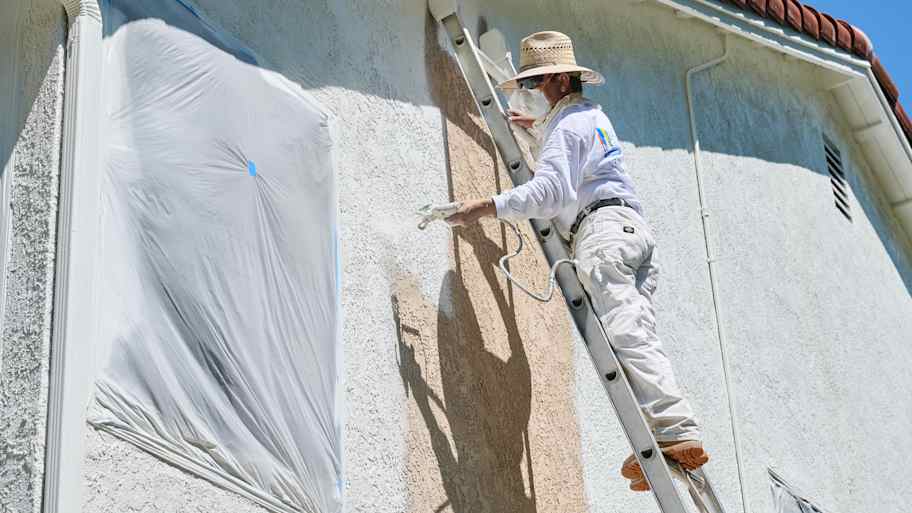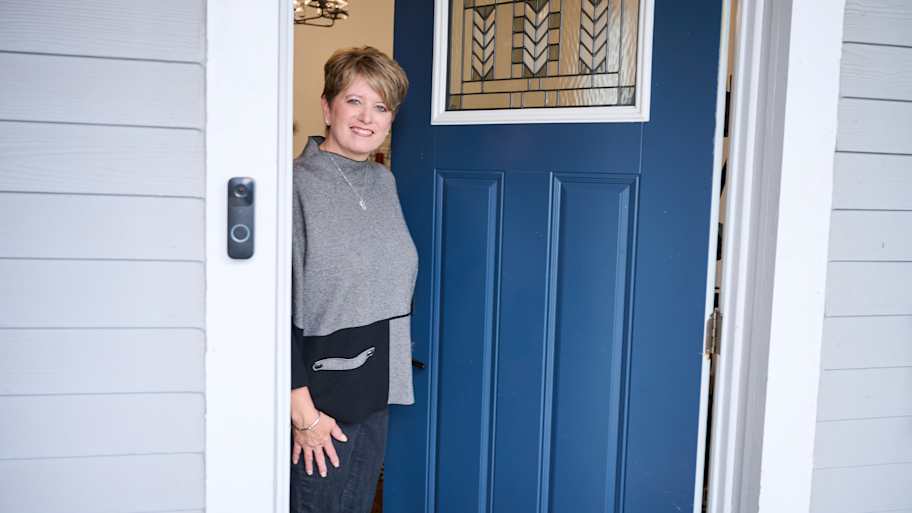What’s the Difference Between Interior and Exterior Paint?
Different strokes aren’t the only thing that set these two apart


All paint contains the same basic elements: solvents, binders, pigments, and additives.
Interior paint uses rigid binders that won’t warp from water contact for easy cleaning.
Exterior paint includes protection from the elements like insecticides and sun protection.
Exterior paint should not be used inside because of its comparatively high amount of VOCs.
If you’ve got a painting project on deck, you may be tempted to crack open whichever old paint cans are collecting dust in your garage. Whether you’re actually able to use them will depend on what part of your home needs freshening, because interior and exterior paint have some major differences. But what's the difference between interior and exterior paint, exactly?
Discover how each painty type is formulated to meet specific needs, and why you should resist the urge to use them incorrectly.
Why Can’t I Use the Same Paint Everywhere?
To put it simply—you can’t use interior paint outside because it won’t hold up to the elements, and you can’t use exterior paint inside because of harmful volatile organic compounds (VOCs). Let’s break it down further.
You’ll find the same basic components in all types of paints: pigments, binders, additives, and liquids referred to as solvents. Pigments provide color, liquids serve as a conduit to deliver the pigment to your walls, and the binders are resins that hold them both together. Additives can make paint thicker or thinner, give it a certain texture or finish, increase durability, and offer protection from things like water and sunlight.
However, the exact quantities and composition of the liquid and binders vary a lot, making some options suitable for inside use and others not. For instance, the best exterior paint may use more additives that protect against heavy weather but contain too many volatile VOCs to safely use in an unventilated space. On the flip side, interior paint doesn’t have as high a concentration of additives, so it will bubble, peel, or crack when applied outdoors.
What Is Interior Paint?
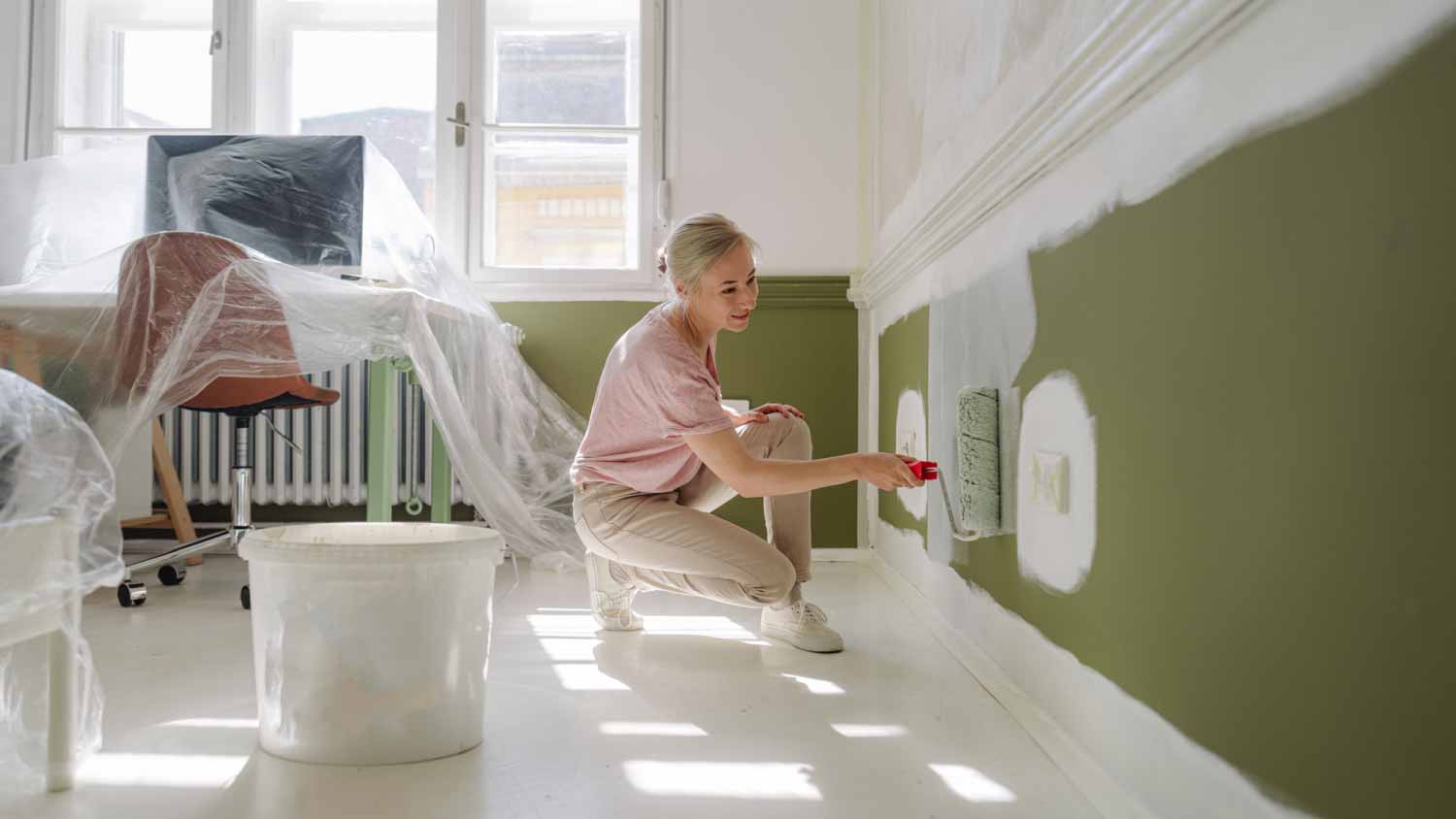
In general, interior spaces don’t need protection from the elements in the same way exterior walls do, so the best paints for indoor walls don’t use the same quantities or types of binders or additives, either.
Instead, the additives used focus on affecting the way your paint looks when dried—like whether it has a matte, semi-gloss, eggshell, or satin finish—or providing defense against more common indoor risks—like preventing mildew or mold growth.
In that same vein, interior paints typically use more rigid binders, like latex and acrylic, which won’t warp from light contact with water. This makes them easier to clean and ideal for high-traffic areas where fingerprints may run amok. And because these substances also produce fewer VOCs, they’re far safer to work within an enclosed space.
What Is Exterior Paint?
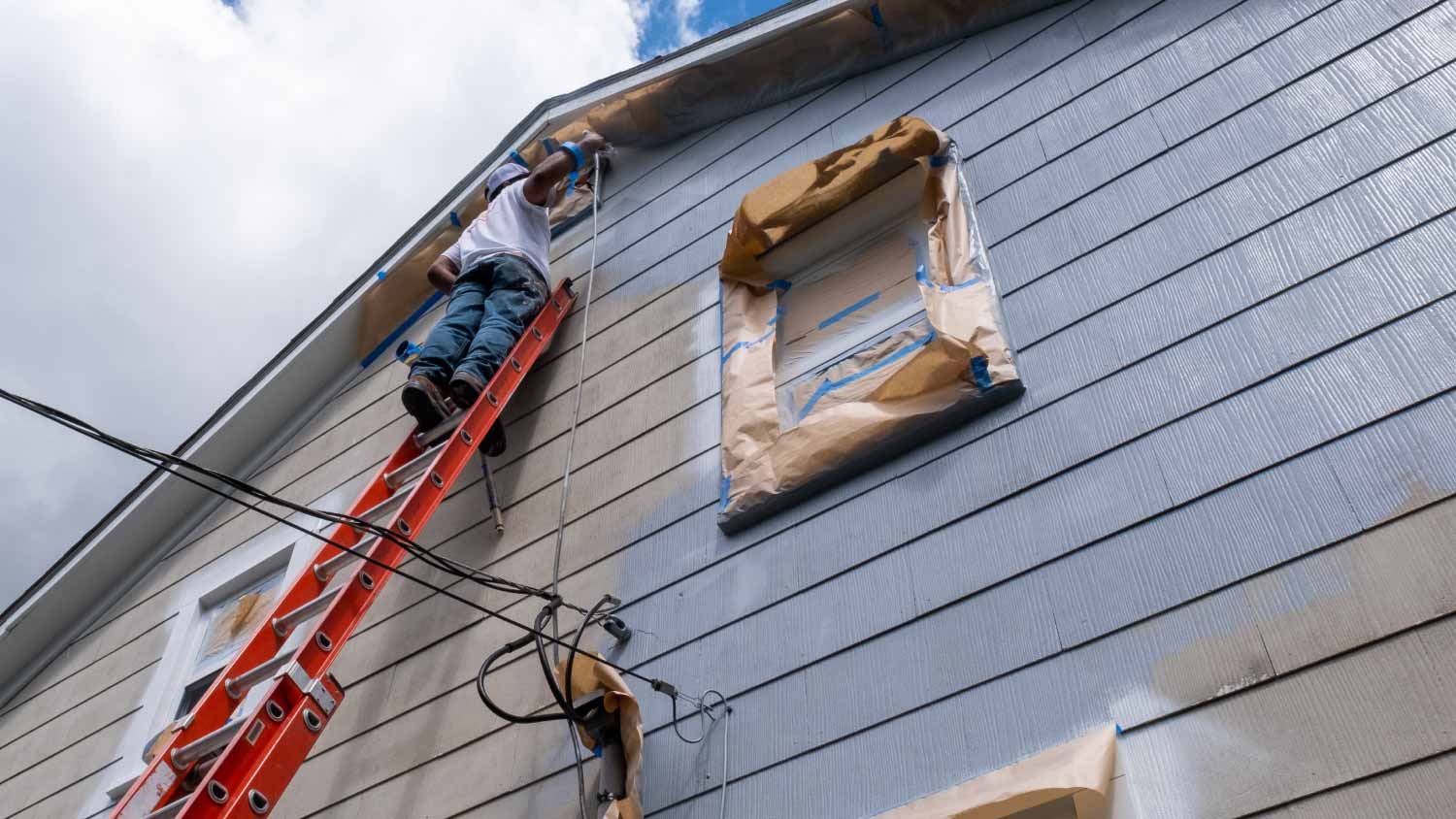
Once again, what sets exterior paint apart from indoor paint is the amount and type of binders and additives used. Specifically, those that prevent fading from extended sun exposure and water damage from heavy rain or snow are favored for outdoor painting.
Similarly, they make use of binders that are more flexible and can adapt to temperature fluctuations without cracking in the process—like epoxy, polyurethane, and polypropylene resin, usually combined with acrylic or latex in varying degrees. These compounds are found exclusively in exterior paint because they produce a lot of VOCs and are only safe to use outside.
Last but not least, exterior paint also requires a finish coat, which is often not the case for interior paints. This extra step adds another layer of protection from the elements in addition to a curb appeal-boosting texture like semi-gloss or matte.
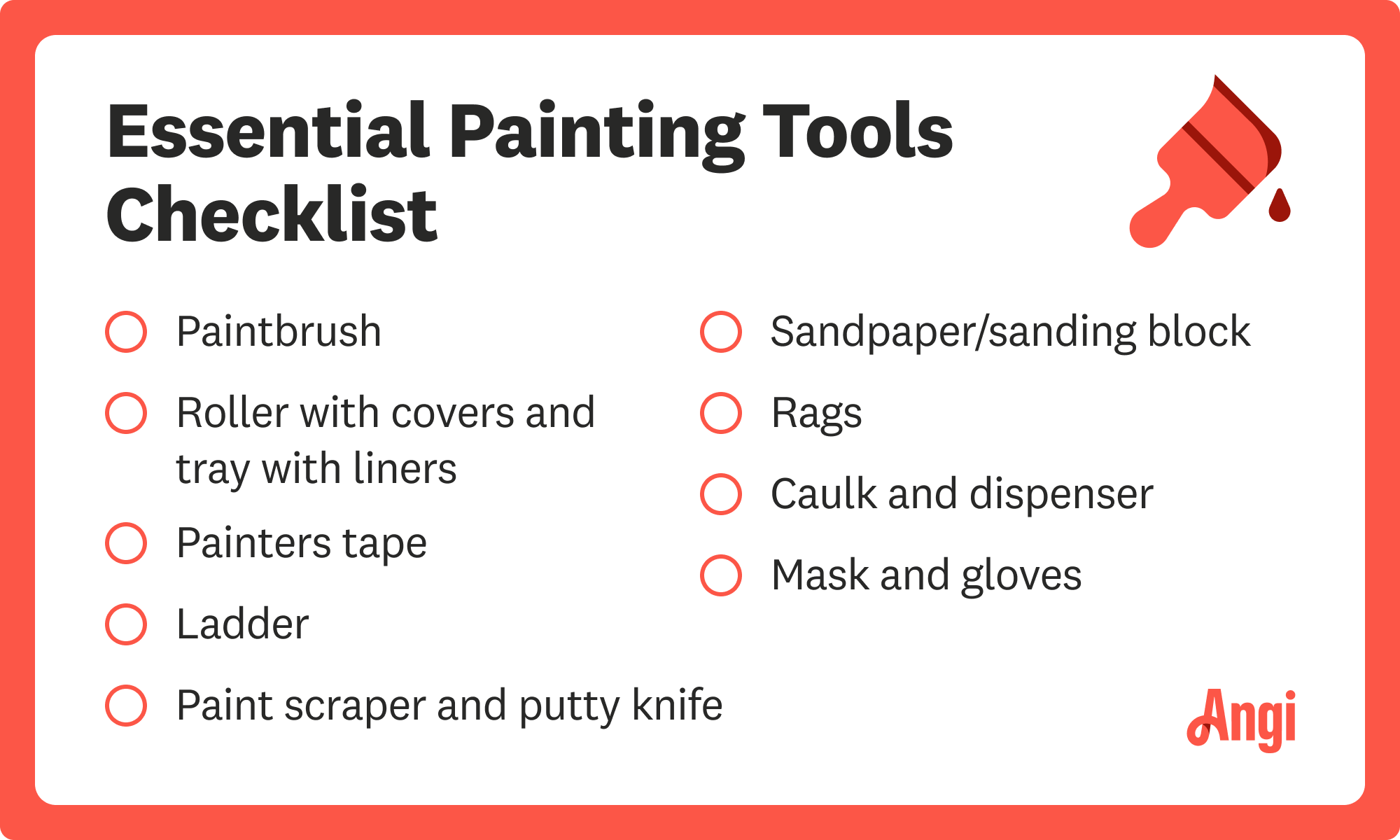
Interior vs. Exterior Paint: Key Differences
Now that you know what’s the difference between interior and exterior paint on a macro level, here’s the breakdown of how the two vary from one factor to another.
| Interior Paint | Exterior Paint |
|---|---|
| Lower VOCs | High VOCs |
| Easy to clean | Includes water- and sun-proof additives |
| No weatherproofing | Can be difficult to clean |
| Easy to DIY | Professional application recommended |
Durability
Exterior paints are more durable because they have to be, especially in extreme weather conditions and unrelenting sunshine. That doesn’t mean one lasts longer than the other, though. Because each is specifically developed with its unique problems in mind, both have the same life expectancy of between five and 10 years.
VOCs
Because exterior paints make use of more chemicals for extra durability, they’re also more toxic than their interior counterparts. Indoor paints typically contain zero to low amounts of VOCs. The maximum amount considered safe for indoor use is 100 grams per liter. By contrast, exterior paints can contain far more—up to 250 grams per liter.
Application
Rain or shine, you can paint indoor walls year-round, assuming you can open the windows for a few hours. On the flipside, you the best time to paint exterior surfaces is during mild weather. The good news is you can spray or roll on exterior paint as well as interior pain—it’s just a matter of preference.
Cost
The cost to paint a house exterior is higher—$1,800 to $5,000 if you hire a pro or $600 if you DIY—because there’s more area to cover. On the other hand, the price for painting interior walls is a little lower at $900 to $3,000 on average.
Professional vs. DIY
Paint itself doesn’t cost that much, so you can save a lot by DIYing either your interior or exterior walls. Painting your inside walls is a highly doable solo project, but exterior walls are much trickier and require a fair amount of prep and working at dangerous heights. When in doubt, save yourself the stress and ensure curb appeal by hiring an exterior painter near you.
Frequently Asked Questions
First off, take a breath. The good news is that interior paint, especially when used outside, won’t harm your health. The bad news is that you’re going to have to reapply the proper exterior paint at some point in the not-so-distant future. Otherwise the current coat will chip, crack, and fade, or worse, develop mold or an insect infestation without remediation.
The biggest issue with painting your interior walls with exterior paint isn’t the way the paint looks or performs—it’s the lack of ventilation. The higher quantities of VOCs in exterior paint will have a harder time dispersing in an enclosed space, so do everything you can to direct them out—like turning on a fan and opening your windows and doors. Afterward, you can simply prime and redo your walls with interior paint, and no one will know the difference.
